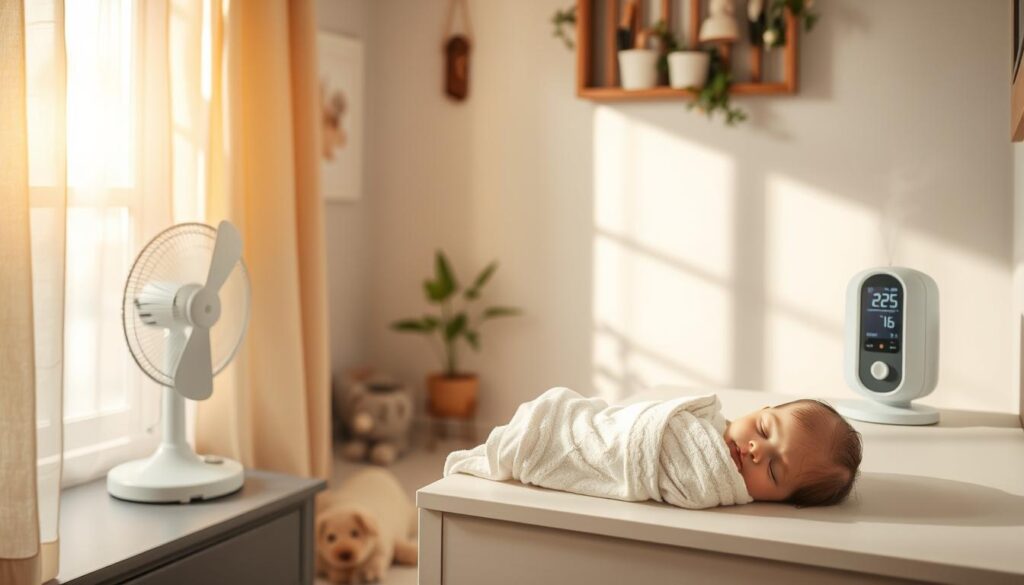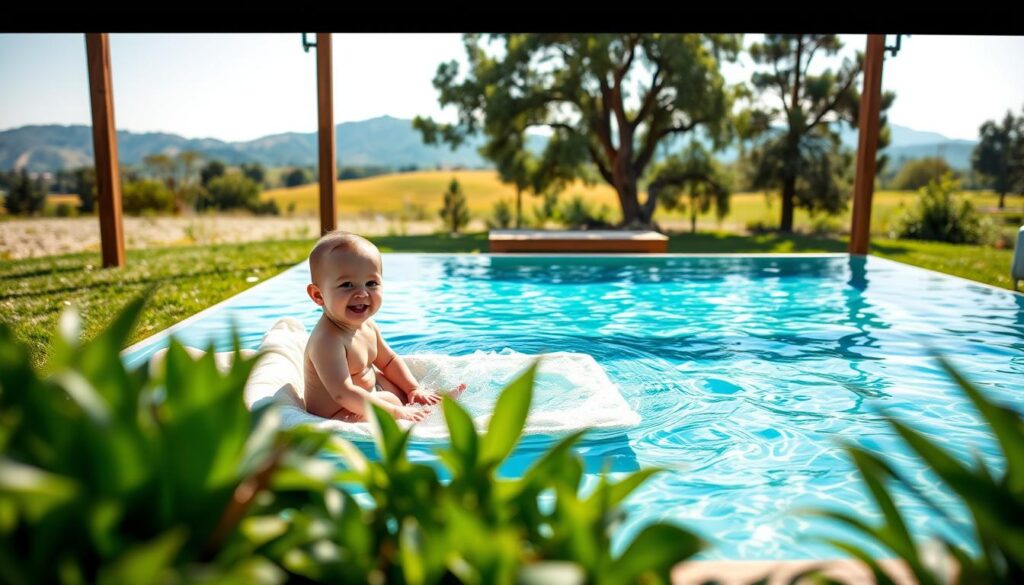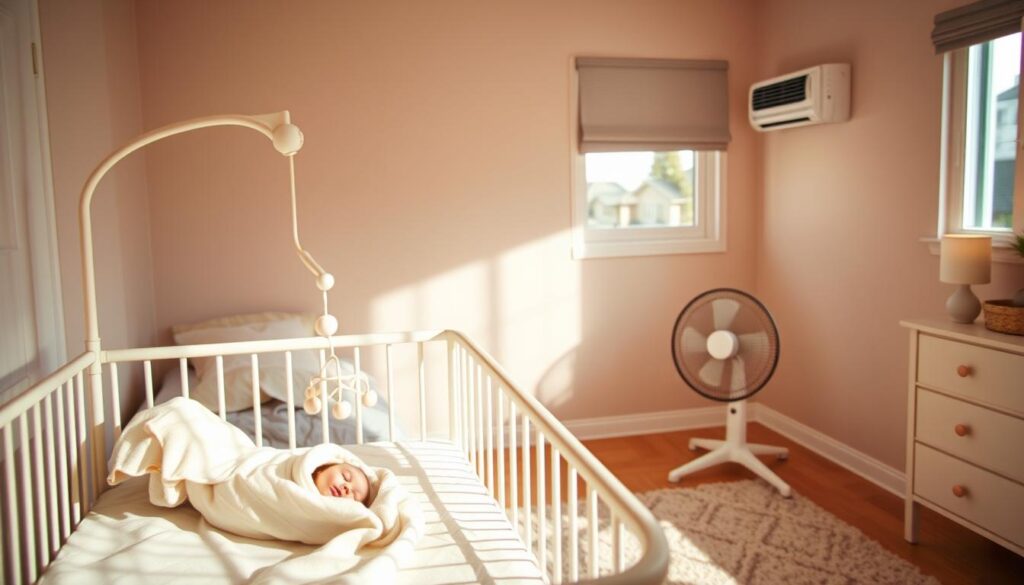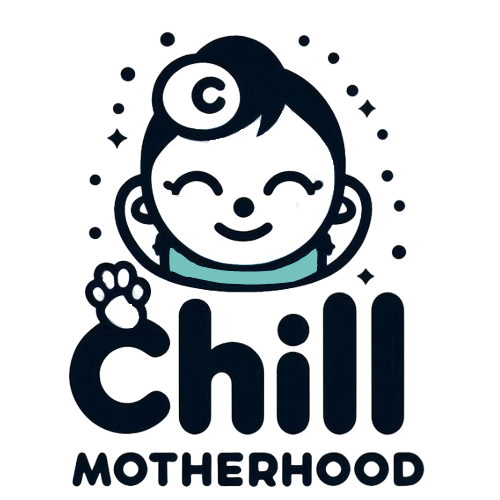As a mom, keeping your baby safe in the summer is key. Summer safety for babies is vital, and knowing the risks helps you protect them. The American Academy of Pediatrics says babies are more at risk for heat illnesses because their bodies are growing.
Protecting your baby from the sun is important. This includes dressing them in light clothes and making sure they drink enough water. This article will give you tips on keeping your baby safe and happy all summer.
Understanding summer safety for babies is critical. By taking the right steps, you can prevent heat illnesses and ensure a fun, safe summer. We’ll cover tips on sun protection and heat safety for infants. This way, you can enjoy the warm weather with your baby, knowing you’re doing your best to care for them.
Contents
- 1 Understanding Baby’s Heat Sensitivity
- 2 Choosing the Right Clothing for Hot Weather
- 3 Creating a Safe Outdoor Environment
- 4 Hydration is Key: Keeping Your Baby Cool
- 5 Protecting Baby’s Skin from the Sun
- 6 Keeping the Home Cool and Comfortable
- 7 Understanding Bug Safety for Babies
- 8 Traveling with Babies in Summer
- 9 Recognizing Symptoms of Heat-Related Illness
- 10 Building a Summer Safety Routine
Understanding Baby’s Heat Sensitivity
As a mom, knowing how babies keep warm is key. They can get too hot fast because they’re small and their sweat glands aren’t fully grown. This makes heat safety for infants very important, even more so in the summer.
Babies can’t sweat like adults do. This makes them more likely to get too hot. Knowing the signs of overheating, like lots of sweat, red skin, and fast breathing, helps you keep them safe and cool.

- Dressing your baby in lightweight, breathable clothing
- Keeping your baby in a cool, well-ventilated area
- Avoiding overheating by monitoring your baby’s temperature and adjusting their clothing and environment
By following these tips, you can keep your baby safe from heat-related illnesses. This way, you can enjoy the summer with your baby without worrying about their safety. Remember, heat safety for infants is always a top priority.
Choosing the Right Clothing for Hot Weather
Dressing your baby right is key to protecting them from the sun and heat. This is vital for baby sun protection. Look for lightweight, light-colored clothes. These keep your baby cool and comfy in the heat.
When picking out clothes for your baby in hot weather, remember a few things:
- Choose lightweight fabrics for good airflow and to avoid heat trapping.
- Go for light-colored clothes to reflect the sun’s rays and keep your baby cool.
- Stay away from dark or heavy clothes that absorb heat and make your baby uncomfortable.
It’s also important to use baby safe sunscreen as part of your baby sun protection plan. Dressing your baby in the right clothes and using baby safe sunscreen helps protect them from the sun. It also lowers the risk of heat-related illnesses.
By following these simple steps, you can keep your baby safe and happy in the heat. Enjoy the warm weather together.
Creating a Safe Outdoor Environment
When you’re outside with your baby, making a safe space is key. The Centers for Disease Control and Prevention say drowning is a big risk for babies under 1. This shows how important baby water safety is.
To keep your baby safe, follow these tips:
- Choose the best times for being outside, avoiding when the sun is strongest.
- Use shade and sun shelters to keep your baby safe from the sun.
- Make sure play areas are safe and away from dangers.
Also, never leave your baby alone in a car. The dangers of hot cars for infants are serious. Even on mild days, a car can get very hot, risking your baby’s life.

Selecting the Right Time for Outdoor Activities
Plan outdoor fun when the sun isn’t too strong. Early morning or late afternoon is best. This helps avoid overheating and sunburn.
Using Shade and Sun Shelters
Shade and sun shelters protect your baby from the sun. Think about using a canopy or umbrella for a shaded play area.
Hydration is Key: Keeping Your Baby Cool
In the summer, it’s key to keep your baby hydrated to avoid heat sickness. Baby hydration in hot weather is very important. Babies can get dehydrated easily because they are small and their bodies are not fully developed. The American Academy of Pediatrics says babies under 6 months should not have water. Instead, they should drink breast milk or formula.
Signs of Dehydration to Watch For
It’s important to know the signs of dehydration in babies. Look for fewer wet diapers, a dry mouth, and sunken eyes. If you see these signs, call your pediatrician right away.
Safe Hydration Methods for Infants
To keep your baby safe in the heat, offer breast milk or formula often. You can also use a cool, damp cloth to help them cool down. Always watch your baby in a cool place.

By following these tips, you can help your baby stay safe and healthy during the summer. Remember to always think about baby hydration in hot weather and heat safety for infants.
Protecting Baby’s Skin from the Sun
As a parent, protecting your baby’s skin from the sun is key. Their skin is sensitive and can easily get damaged. Using baby safe sunscreen is a great way to prevent sunburn and lower the risk of skin cancer later.
The Skin Cancer Foundation says babies under 6 months should avoid direct sunlight. They also advise against using sunscreen on babies under 6 months. Instead, dress your baby in light, loose clothes that cover their skin. Use a hat to protect their face and neck.
Choosing Baby-Friendly Sunscreen
When picking a sunscreen for your baby, look for one made for infants. It should have an SPF of at least 30. Neutrogena and Johnson’s are good brands to consider.

Clothing as Sun Protection
Clothing is a great way to keep your baby’s skin safe from the sun. Look for clothes with a UPF rating of 50+. This means the fabric blocks 99% of the sun’s UV rays.
Here are some tips for dressing your baby in sun-protective clothes:
- Dress them in light, loose clothes
- Use a hat to cover their face and neck
- Choose clothes with long sleeves and pants
Best Practices for Sun Exposure
To keep your baby’s skin safe from the sun, follow these tips:
- Avoid going outside during peak sun hours (10am-4pm)
- Find shade when outside, mainly during peak sun hours
- Use a stroller with a canopy or umbrella for extra shade
Keeping the Home Cool and Comfortable
As a parent, making sure your home is safe and comfy for your baby is key, more so in summer. It’s vital to keep your baby safe from heat. The Centers for Disease Control and Prevention say heat-related illnesses happen when the body gets too hot, over 104°F.
To stop heat stroke in babies, you need to pay attention and make a few changes. Keeping your home cool and comfy helps your baby stay safe and healthy. You can do this by using fans and air conditioners, making your home baby-friendly, and following tips for evening comfort.
Using Fans and Air Conditioners
Fans and air conditioners are great for cooling your home. Make sure fans are out of your baby’s reach to avoid accidents. Air conditioners help keep the temperature right, but always follow the instructions.
Creating a Baby-Friendly Environment
Creating a safe space for your baby is more than just cooling it down. It’s also important to make sure their sleeping area is well-ventilated and cool. Use light bedding and keep the room cool to avoid overheating.

Tips for Evening Comfort
In the evening, there are extra steps to keep your baby cozy. Keep the room cool, use light bedding, and dress your baby in light, breathable clothes. These tips help your baby stay safe and comfy, even on the hottest summer nights.
Understanding Bug Safety for Babies
As a parent, knowing about bug safety for your baby is key, more so in summer. This is when bug bites and stings are more common. It’s important to use baby insect repellent safely to avoid illnesses. The Centers for Disease Control and Prevention say DEET repellents are not safe for babies under 2 months.
To keep your baby safe from bugs, there are steps you can take. Always check your baby’s skin for bug bites or stings. If you see redness, swelling, or itching, see your pediatrician right away. Also, be careful about leaving your baby in a hot car, as it can lead to bug bites and heat sickness.
Insect Repellents and How to Use Them
When using insect repellents on your baby, follow the instructions closely. Pick a repellent made for babies with natural ingredients. Apply it to their clothes and gear, not their skin.
Avoiding Bug Bites and Stings
To prevent bug bites and stings, dress your baby in light, covered clothes. Stay away from places with lots of bugs, like near water or in woods. Use mosquito nets or screens to keep bugs out of your baby’s space.
Safe Outdoor Bug Protection
When outdoors with your baby, protect them from bugs. Use a stroller or baby carrier with a bug net. Avoid leaving your baby near bugs. These steps will help keep your baby safe from bug bites and illnesses.
Traveling with Babies in Summer
When you travel with babies in summer, keeping them safe and comfy is key. Baby hydration in hot weather is vital to avoid heat sickness. The American Academy of Pediatrics warns that babies under 2 should never be left alone in a car, even with windows open. This shows how important heat safety for infants is when you’re on the move.
To make your trip safe and fun, here are some tips:
- Always check the car temperature before putting your baby in.
- Keep your baby hydrated with lots of water and feedings.
- Dress your baby in light, breathable clothes to keep them cool.
Look for family-friendly destinations that have things for babies. Also, think about how you’ll get there and make sure your baby is safe. For example, know the airline’s rules for babies when flying.
By following these steps and watching out for heat safety for infants, you can keep your baby safe and healthy on trips. Always check for the latest advice on traveling with babies in summer.
Recognizing Symptoms of Heat-Related Illness
As a parent, knowing the risks of heat-related illnesses in infants is key. Heat safety for infants is vital. It’s important to spot the signs of heat exhaustion and heatstroke quickly. The Centers for Disease Control and Prevention say heat exhaustion happens when body temperature goes over 104°F. Heatstroke occurs when it goes over 107°F.
Signs of Heat Exhaustion and Heatstroke
The signs of heat exhaustion and heatstroke can be hard to spot. But knowing them is critical to preventing heat stroke in babies. Look out for:
- High body temperature
- Restlessness or irritability
- Flushed skin
- Rapid breathing
- Decreased urine output
What to Do in Emergencies
In a heat-related emergency, act fast. If you think your baby has heat exhaustion or heatstroke, move them to a cool spot. Remove extra clothes and give them cool water. If the problem gets worse, get medical help right away. Remember, heat safety for infants is a top priority. Knowing the risks and taking steps to prevent them can keep your baby safe.
Building a Summer Safety Routine
Starting your summer with your baby means setting up a safety routine. Begin each day with a safety check. Make sure your baby’s clothes, water, and sun protection are ready. Talk to other parents in your area to share safety tips and support each other.
Daily Safety Checks and Precautions
Always check your baby’s safety before going out. Ensure their sunscreen is on, they’re wearing light clothes, and they’re drinking enough water. Watch for signs of too much heat or not enough water all day.
Engaging with Other Parents for Support
Talking to other parents can be really helpful. Join online and in-person groups to share experiences and learn from each other. This way, you can get tips on keeping your baby safe during summer.
Finding Resources and Support Groups
There are many resources to help keep your baby safe this summer. The American Academy of Pediatrics and other trusted groups offer advice on sun protection and staying cool. Look for local groups and talk to doctors to get the help you need.

